So, I say this every time but this one is REALLY good. In all fairness, I have been fortunate to get some of the smartest people in marketing, so if they are ever bad, it’s my fault for sure. 😉
This time we have someone I like to call an “enlightened marketer.” Mike Verret is principal at Verret Associates. He helps some of the biggest companies around to understand their audience, the perspective of their audience, and how to communicate with that group.
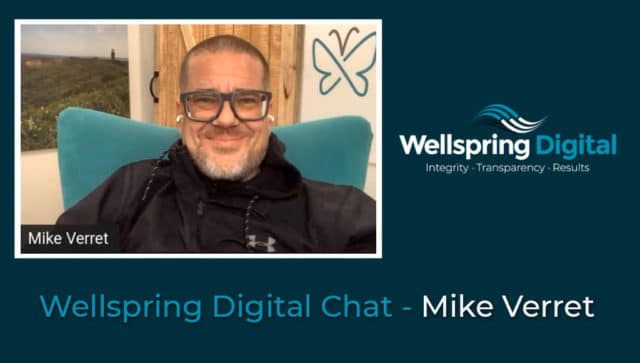
There is so much great stuff in here, I highly encourage you to stick around until the end. In this, we talk about…
- Why are marketers always saying to “focus on your audience?” Shouldn’t they know this already?
- Perspective and empathy in marketing today
- The need to be first, best, or different
- Breaking down silos
- New privacy laws and the future of marketing technology (my favorite answer to this question so far)
OK, let’s do this…
Digital Transcript (Edited for Readability)
Introductions
Jon-Mikel Bailey: Howdy, folks. It’s Tuesday. It’s probably not Tuesday when you’re watching this, but it’s Tuesday when we recorded this, and we’re going to try to get past that. That horrible fact that it is Tuesday. And Tuesday is a horrible day, and no one likes it.
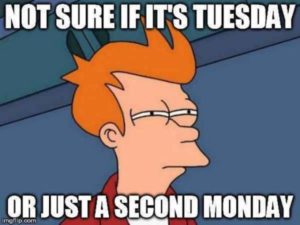
And, you know, we have plans for Tuesday, but we’ll talk about that at a later date.
Anyway, I’m Jon-Mikel Bailey and welcome to the Wellspring Digital Chat series. This is where we go out we have a special ops team that goes out at night and steals marketers while they sleep. We take them to an undisclosed location, we roughed him up a little bit, but you know, everybody needs to be roughed up from time to time.
And then we extract all the useful knowledge out of them, and we give it to you. And then we take them back and we give them a Starbucks gift card and everybody’s happy. It’s good to go.
So, man, these intros keep getting more and more ridiculous. I think I need to see a therapist. Anyway.
When I met Mike Barrett, I quickly realized that we speak the same language. And Mike is one of those people that I like to think of as an “enlightened marketer,” whatever the hell that means. So I was gonna give some sort of professional intro, but I think Mike would say much better than I would. So Mike, please go ahead and introduce yourself to these fine folks.
Mike Verret: Jon, first, I’ve never had the Manchurian Candidate experience for being a guest where you reprogram me to get me on the show. So I got to compliment you on your prowess. They’re amazing.
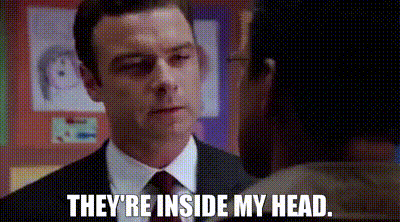
Well, thank you for having me. And I couldn’t agree more that it was clear, we speak the same language. I would say I have 25 years of experience in the marketing and advertising and ultimately brand management world. And in that 25 years, one thing bubbled to the surface.
Businesses think internally, they think about how do I solve the problem for my customer, what is the solution that I’m giving them, and then everything is built internally. 100% is important to the business. The reality is only 5% of that matters to your audience. And finding that 5% is like finding a needle in a stack of needles.
And you need to communicate the benefits of what you can do for your audience in a way that’s going to engage them. That is the world that I live in. I show businesses how to talk about themselves to their audience, understanding that, finding that needle. Finding that 5% requires an outside perspective.
Think of Stephen King writing a horror novel, like 400 pages of the next book that’s going to be turned into a movie. But to sell that book, people don’t read the whole book, and they don’t write the first sentence, they read the three paragraphs on the inside flap for Stephen King to take 400 pages of information, including character development, scenes, and environments, plot twists all of that, and distill it to three paragraphs that get somebody to buy the book is an impossibility for him.
He needs the outside perspective to find that bit that’s going to attach that audience. So that’s what I do. I help businesses clarify what they’re saying to their audience, and helping them stand out to their audience is one of the only three things that matter to an audience that they will remember, you got to be first, best, and different.
Jon-Mikel Bailey: We’re gonna talk about that for sure.
Mike Verret: Yeah. So that’s ultimately what I focus on. And giving them one way to talk about themselves, so that all of their marketing is consistent, and it becomes more efficient. All of their sales are consistent and become more efficient, and they’re memorable to their audience.
Jon-Mikel Bailey: So I’ve read quite a bit of Stephen King, and he’s a wordy fella. He, he likes him some words. So yeah, I can’t imagine distilling that down. Wow. What a project that must be. I’m really excited about this one, particularly because I get to ask you questions that are, you know, really kind of meaningful to me, because it’s really all about me. I don’t really care about anybody else. But, you know. Just be honest here.
So, I’m excited because I think we can get a little philosophical here, so, oh, great.
Mike Verret: Bring it.
Jon-Mikel Bailey: All right. Are you ready to do this? Let’s do this. All right.
Focusing on Your Audience
Jon-Mikel Bailey: So, there’s a softball here. Marketers are forever telling their clients, bosses, anyone who will listen to “know their audience.” If I had a nickel for every time I read that phrase, I’d have a lot of nickels: market to their audience, focus on their audience, you know, getting a better idea of their audience…
Mike Verret: What is their pain point or their needs?
Jon-Mikel Bailey: Right. Right. So I’ve been in marketing since 1998. And the advice never changes. So why are we still preaching this? Shouldn’t this be obvious to marketers and business owners and everyone now? Or is this just something that we are forever going to struggle with?
Mike Verret: The reality is, we have to be able to answer that question. Otherwise, what the hell are we doing in business? “What problem do I solve for my customer” is the heartbeat of your business. Meaning, you have a vision for what you want to do, that vision becomes your mission statement, that mission statement defines your brand essence, or what you stand for as a brand.
And that starts to say, “Okay, this is what we’re gonna show to the outside world.” Then you have your core values, like your four pillars of excellence, then that defines your marketing and sales strategy, and your products and services. So picture it almost like a pyramid where that vision and mission are at the top products and services are at the bottom.
Once you’ve asked that question at the top, “what problem do I solve for my customer?” the entire dialogue after that is internal. Meaning the culture of your business. What you’re going to say what you’re going to sell is all defined internally, without answering the key question, “how is my customer going to perceive my solution?” That is the missing link?
It’s almost like a translation exercise. From that pyramid that you built internally? How do you put that in a way that the audience is going to latch on to it and follow along in an order that’s important to them? You think products and services, you think benefits, you can help your audience, your customer.
But if you can’t relate that to them, then you’re not going to be able to give them that solution. That’s a big problem. And it comes down to relatability. And perception. If they’re on step two, and you start talking about step 10, you’ve lost their attention. They don’t know what you’re talking about.
A frequently asked questions page on a website. A well-written one starts with the most general question and goes down to the most specific and creates a funnel. That’s how the human mind works. What is it? How does it work? How does that work? How does this part work, we go in order, we don’t just go straight to I need this service.
If we’re searching for something like a PR firm, we go on Google and search for a PR firm. At that point, we’ve got what 100 results pop up and under two-tenths of a second, all we have to do is move the mouse between a result and the back button. We are operating in five to seven-second increments.
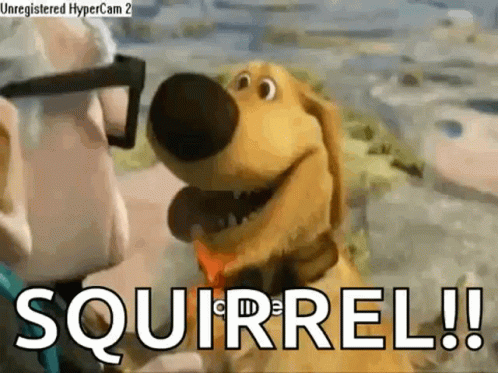
Does that interest me enough to read on? Just like somebody reading a resume, that first sentence, if they’re not intrigued by it, they move the resume of the not interested pile.
So if I’m searching for a PR firm on Google, and I get 50 results, and the first five that I click on, say we’re a PR firm, they’ve hit the bare minimum of my expectations. But if the sixth one says, you get writer’s block, we’ll help you find the words to get your news out when it matters. All of the sudden, that looks completely different than the first five. And I’m intrigued.
And I’m going to read lower, the reason being one chose to speak to me about my challenge. I can’t write about myself. People can’t write about themselves, businesses can’t write about themselves. You get writer’s block, trying to find those words. That’s what that PR firm decided to do was related to them on why they put PR firm into Google and not just say, yep, we’re a PR firm.
There’s a big difference to the audience.
Perspective and Empathy in Marketing Today
Jon-Mikel Bailey: Yeah, and you’re focusing on perspective and knowing the perspective of your audience. I like to think of it as, I tend to use the word “empathy,” which is similar. But, you know, I think we’re saying a lot of the same things. I’ve spoken to many guests on here about empathy and marketing, especially in the pandemic. Empathy was what’s hugely important.
My question is, how do you balance empathy with the pressure to show ROI and to get to the bottom line? To deliver the leads, you know, those kinds of pressures? How do you explain to the powers that be? The importance of empathy in relating it to ROI leads and all that kind of stuff?
Mike Verret: Well, my perspective on it is based on human nature and common sense with a bit of logic thrown in. Okay, this is not a quantifiable and qualitative research thing. It’s not a focus group thing. What it comes down to is how people process information. So, in other words, if I can answer questions for you, your first question is never going to be what’s the ROI? Right? So that shouldn’t be the first concern.
The first concern should be, “alright, what are you going through?” And how do I immediately capture your attention on what you’re going through, and then immediately relate to what you’re going through, and then immediately give you a solution to what you’re going through. So I’ll give you an example.
When I was a kid, my family had a little cabin in the woods. And every weekend, we’d go out there. And my father, if something went wrong with the cabin, he did all the repairs. It was like the dad in the movie, A Christmas Story when the furnace goes bad.
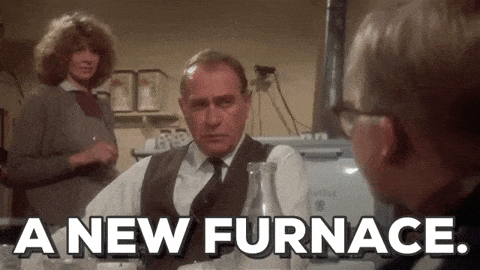
And he’d go downstairs and curse up a storm. In this instance, we’re in the middle of nowhere, the closest hardware store is about 25 minutes away, and there’s a leak. God might get a hardware store and I’m like 11 years old at the time.
Jon-Mikel Bailey: Fudge
Mike Verret: Yes, exactly. But I didn’t say fudge. And so we get in the car, 25-minute drive, 10 minutes, and we hit the county road. And there’s a huge billboard on the side of the road. And it’s a cartoon sort of character of a guy sitting in a chair looking up with a sad face, looking up and water dripping on his head.
And next to it in giant letters. It says “Roof leaking, call us now.” He pulled over at a gas station, put money in a payphone called them, turned around, and drove home. The total time is 20 minutes. The point being that sign didn’t say “We are roofers.” That sign said you’ve got water dripping on your head. You can’t wait to get that fixed, call us now. We’ll be right there.
That’s a big difference. And that is how the customer is thinking, the customer is not thinking, “Oh, I wonder why this water is coming through my roof. There must be a broken thing. And I need to have somebody come over and fix that thing.” What they’re thinking is, “oh, there’s water dripping on my head in my house. And that’s not where water should be. And it has to stop immediately.”
So how do you approach that? You know, what they’re going through? You know, how they’re thinking. What do you say in that instance? How do you say, how do you show empathy? Yup, waters dripping on your head. Here’s a picture of it. And this is the face that you’re feeling right now. If you call us we will fix it immediately.
That’s all the audience needs to hear. Not how you’re gonna fix it. Not the quality of the tar paper or the shingles you’re gonna use right? Not how many ladders you have. I don’t care about any of that. I want the water gone.
Jon-Mikel Bailey: Yeah, or what license you have and how many years…
Mike Verret: Yeah, yeah. So what’s gonna make more of a difference for that person. If they’re searching for roof repair on Google? That’s what it comes down to. It’s how human beings process information. And businesses just get in their own way. They use words like ideate and synergize and KPI.
KPI is my favorite business term. If you and I were buddies, we went out for a beer one Friday, for happy hour. Oh, my God, Jon, I got to split. My son’s got a basketball game. What are your KPIs this weekend? We’d sound insane.
But businesses there’s no here’s an important takeaway. There’s no business without show business. Then every business you’re playing a role. You have scripts, you have wardrobes, you have sets, you have directors and producers, you have an audience. You are not that person when you step out of that building, nor are you that person when you’re processing any information.
If you’re looking for a print house, to create brochures for your business, you’re searching “print house,” you all of a sudden are acting like a human being. The second that print house gets word you using words like ROI, margin, and cost per unit, that’s not natural.
Jon-Mikel Bailey: I’m still thinking about how badly now I want to I want to make a YouTube video of two guys at a bar talking about their KPIs for the weekend because that’s hilarious.
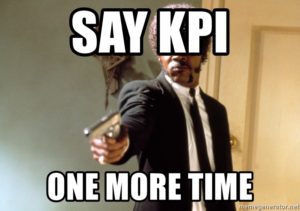
Mike Verret: Hey, nice SAAS.
Jon-Mikel Bailey: How’s your vacation? What was the ROI?
Mike Verret: Yeah, I wrote a post about acronyms. I must have like, just gotten off a call or somebody was bleeding me dry with acronyms. And I wrote my LinkedIn post last week about it. And it got like, well, 1000 views and all these comments like, “Oh, my God, I hate that.” It’s like that, then why do we all do it?
The Need to Be First, Best, or Different
Jon-Mikel Bailey: Right. I just want to I just want to stay in that. That’s, that’s fantastic. So you mentioned in your intro about the need for businesses to be first, better, or different. So the problem I often see is that business…
Mike Verret: Best, best.
Jon-Mikel Bailey: Okay, first, best, or different? So the problem I see is businesses tell you these things more than they show you. So how does first, best, or different translate into effective marketing or messaging? How do you translate? How do you get that message out there? How do you show that?
Mike Verret: Well, the first thing to understand is that first and best are really hard to come by. First is, by definition, the first. That’s an easy one to claim. Best is actually the perception of the user. That’s social and subjective, right? Not everybody would say something’s the best.
But different. Everybody can do. That’s not a barrier to entry. What happens though, is that businesses think about “we have to appear different.” And it ends up dressed like a clown standing on the street corner twirling a car wash sign. Oh, that’s wrong. But different is not in your eyes. It’s in the eyes of the end-user.
Different is that billboard that didn’t say we’re roofers, it said, you’ve got water dripping on your head, and you needed to stop now, that looks different. If I’m searching roofer on Google, where are roofers, there’s water dripping on your head, call us now. Different. That’s what it means.
It doesn’t mean I have to drive out there with lights and sirens and on the Roof Doctor, and blah, blah, blah, because that’s me talking to me. I was on a networking group where one guy was literally dressed like a pilot. His business had nothing to do with flight, it was web design. And he did the whole thing.
Like ladies and gentlemen, this is your captain speaking. It had nothing to do with anything. I remember him because he was dressed like a pilot. But I don’t know what he does. He was really entertaining, and he did a great job with it. But that’s not the point. I don’t care. If you remember me as a pilot, I care if you remember me as someone who’s helping you get out of your own way with your website.
Jon-Mikel Bailey: Right.
Breaking Down Silos
Jon-Mikel Bailey: Another problem that seems to rear its ugly, ugly head all the time – and I read about it – I’ve been reading marketing books since I started in this business. And they all talk about the need to break down silos in their organization. And, I would like to see this happen more, I think it is starting to happen a little bit more.
But why is it so hard to bring departments together? You know, it’s I read, I think it was yesterday, someone was talking about how, you know, marketing is all departments now. You know? Why is it so hard for companies to embrace this? Or, or is it that hard anymore?
Are they starting to see that the whole business is marketing? You know what? I don’t know what my question is. I’m just trying to figure out if businesses will get to the point where they appreciate the fact that the whole entity is marketing-based, regardless of what type of business they are in. Does that make sense?
Mike Verret: Yep, just to simplify things, let’s use the classic example and I’m positive this is where your mind is going of marketing versus sales. Totally, because nobody cares about operations and technology in this conversation. It’s what are we doing today and who are we saying?
Jon-Mikel Bailey: I wanted to bring it but I don’t want to start this fight.
Mike Verret: Well, you’ve got a very simple dynamic of people who have to go out and do one thing versus people who have to go out and do another thing. And the people who have to go out and do one thing, sales, need to sell really straightforward. If they don’t have one way, or one position, or one thing to talk about when they sell, then the salesman kicks in, meaning it’s the salesperson that’s taking over that message.
They are going to play to their strengths, they are going to start going off-script. Because the script is isn’t easy enough. Think of it that way. Marketing looks at everything like we’ve got our fingers in it. And it has to be this way. And this represents our brand. And we need this and that and this is who we have to be.
Sales doesn’t care. They need to sell. Imagine how much easier it is if sales and marketing have the exact same script to start from. And they have to communicate these five things in that script in this order. From that point on, I don’t care if your sales guy is ad-libbing a bit, as long as the order and sentiment remain.
From a marketing standpoint, tactically, like your Facebook campaigns, email, anything like that needs to tell the same story, too. If you have one way to talk about what your business does, one way, then marketing and sales are saying the exact same thing. Right? They are not saying no, this is more important than that.
They’re not saying we have to take a brand approach versus no, we have to sell. They’re all saying the same thing, no matter what the situation is. That creates uniformity, not uniformity. It creates consistency. And it breaks down a lot of that strength, believe it or not, it’s not from marketing’s point of view. It’s not from a sales point of view, it is one way to talk about that business.
Here’s what it means to use salespeople, here’s what it means to you marketing people.
Jon-Mikel Bailey: Is it time to stop having a marketing department and a sales department and just create something new? That’s all of them together?
Mike Verret: No, I think it’s a question. You can’t possibly expect people to worry about the brand and go and sell it. Think of it that way. It’s a lot to take on if they’re already doing that, like a small business is already doing that. They’re effectively the C suite. They’re worrying about everything.
Marketing and sales are two different functions. Think of it as a nightclub. Okay. Sales is inside the nightclub. Marketing runs everything right up to the bouncer checking the ID and the door guy opens the door. How do you get them to the club? How do you get them to wait in line? Show their ID and go through those doors.
That’s what marketing does. Sales should be echoing exactly what’s outside. Outside is red velvet ropes. And you pulled up in a limo and you get inside. And it looks like a lazy Irish Pub. That’s a disconnect. But if everybody’s talking about this nightclub where Jay Z is going to be performing, and everybody lines up for it. And then you get in and that nightclub is the energy of a Jay Z nightclub. And he delivered on both ends.

Jon-Mikel Bailey: That’s how, I don’t know, I kind of want to go now to the Irish place that has ropes outside.
Mike Verret: A quick story on an event in New York and the after-party was going to be at this very cool, at the time, a very cool club. And we got a call for hours from the DJ for the event and the after-party. I’m sitting next to him when I get this information is Biz Markie.

We had to find a new place to get Biz set up. There we set up fake red ropes and a gorgeous woman taking names and she was just ushering them into limos to drive them five blocks down the road. Because we didn’t have time to cancel it.
Jon-Mikel Bailey: That’s amazing. I love it. I love it. I love Biz Markie. He may rest in peace.
Mike Verret: The man walks slow, I’ll tell you that.
Jon-Mikel Bailey: Yeah, I’m sure that makes perfect sense.
New Privacy Laws and The Future of Marketing Technology
Jon-Mikel Bailey: So I want to say switch gears here and round it out. I want to talk, you know, as a messaging brand guy, I’m curious to hear your take on the evolving landscape of privacy as I see you have the iPod, I bud, whatever the heck those air pod doing plugs in there and
Mike Verret: Just makes it so I could do better.
Jon-Mikel Bailey: There you go. There you go. But there’s been a lot of privacy updates from Apple. So what do you see as the future of online communications and marketing automation, you know, as they relate to these upcoming privacy concerns? I’ve asked this question over and over again, and I get some varied answers. But I think the sentiments are the same, and I’m very curious to hear what you have to say on this.
Mike Verret: I’m gonna go way back on you. Do you remember, radar detectors? Radar detectors thwarted the police from using radar guns. So what the police did was get a different kind of radar.
What the other people did was figure out a new technology that got around the new radar gun. That’s ultimately what’s going to happen no matter what. Technology is technology, access points are access points. What I look at all of it as is security theater.
Meaning, these are the threats that we know about now. So we are going to beef up our security. But what’s happening in the background is people just going around that next blockage, and it creates the next threat.
It’s like TSA after 911 is a massive focus in the airline industry. But it’s designed to stop what happened on 911. All they have to do is a workaround. So all of this…
Jon-Mikel Bailey: Think about that next time you’re in a TSA line, but go ahead.
Mike Verret: Yeah, I don’t mean that like they’re putting on a show. I mean, is okay, that’s not gonna happen again. But that doesn’t protect you against what’s going to happen next.
And all of the energy and all of the focus on privacy around Apple, it’s because Apple’s a big company. Right? You know, I mean, they just had this article I read about the Canadian trucker convoy, the freedom convoy, and that all the donors were just released by a hacker privacy issues.
They have been everywhere, just because you use Apple products, they’re saying it’s okay, we’re focusing on privacy doesn’t change anything, it’s theater. That’s how I feel about it.
Jon-Mikel Bailey: I’m not gonna lie. And I hope I don’t offend previous guests. But that’s my favorite answer to that question today. Because it’s the most brutally honest answer that I think I’ve gotten on this question. And it makes perfect sense to me.
Mike Verret: The silliest example I could give this is a salad bar at Applebee’s or Ruby Tuesday’s or whatever, where there’s the sneeze guard because one day somebody sneezed on the salad bar, but their hands are still on the damn salad. Yeah, it doesn’t change it. It just looks like oh, don’t worry, nobody sneezed on it. I know where their hands are bad, but nobody sneezes on it.
Jon-Mikel Bailey: No, I like a little sneeze on my salad. I think it enhances the flavor, but it’s like bacon bits.
Mike Verret: You know, a chicken sneezer salad.
Jon-Mikel Bailey: I can’t think of a better place to end this interview. That was fantastic. Thank you for that. That made Tuesday just fine and dandy with me. So I appreciate that. Well, Mike, thank you so much for being here. Thank you so much for coming on. There’s a lot of great stuff in here and I can’t wait to share it with everyone and hopefully enlighten some other marketers out there and on our path to better marketing.
Mike Verret: Well, Jon, thanks for having me. I’m tickled stupid every time somebody is willing to let me talk and I appreciate it. And I just hope I wasn’t boring.
Jon-Mikel Bailey: Not at all. Not at all. Here’s to tickling stupid. So with that? See y’all!